18.07.2023
Chandrayaan-3 health is normal, says ISRO
Through its journey, Rs 600 crore-Chandrayaan-3 will be monitored and controlled by scientists at ISTRAC/ISRO in Bengaluru
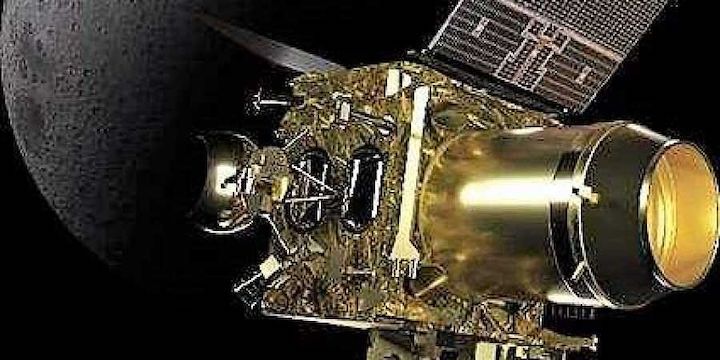
The first orbit-raising manoeuvre of Chandrayaan-3, India’s third unmanned mission to the Moon, was successfully performed on Saturday, the Indian Space Research Organisation (ISRO) said, adding that the health of the spacecraft, which was launched on Friday, was normal.
“The spacecraft's health is normal. The first orbit-raising manoeuvre (Earthbound firing-1) was successfully performed at ISTRAC/ISRO, Bengaluru. Spacecraft is now in 41,762 km x 173 km orbit,” the space agency said in a terse update late Saturday evening.
The update came a day after ISRO’s most trusted rocket LVM3-M4, dubbed as the “Fat Boy” for its heavy lift capacities, launched Chandrayaan-3 from the Satish Dhawan Space Centre in Sriharikota, 110 km from here. The orbit-raising manoeuvre is part of several phases of the spacecraft before it makes a “safe and soft landing” on the south polar region of the Moon. If all goes well, Chandrayaan-3 will land on the lunar surface at 5.47 pm on August 23.
Through its journey, Rs 600 crore-Chandrayaan-3 will be monitored and controlled by scientists at ISTRAC/ISRO in Bengaluru.
While the Earth-bound manoeuvres will be completed by July 31, Chandrayaan-3 will begin its journey towards the Moon (trans-lunar insertion phase) on August 1, while the separation of propulsion and lander module will take place on August 17.
Finally, on August 23, the lander is expected to make a soft landing at 5.47 pm after travelling over 3.8 lakh km.
The Chandrayaan-3 lander carrying a rover within it will be carried into an orbit around the Moon by the propulsion module. A little later, the lander will separate from that module and will attempt to make a soft landing in the south polar region of the Moon, which is of intense interest as it has many permanently shadowed craters which could contain water ice and precious minerals.
Scientists said the precise goal is to make a soft and safe landing on the south polar region of the Moon, which is still unexplored. The region is of intense interest due to the presence of many permanently shadowed craters which could contain water ice and precious minerals, and the spacecraft is expected to make several discoveries.
Billed as a follow-up mission to Chandrayaan-2, Chandrayaan-3 will seek to demonstrate end-to-end landing and roving capabilities.
Quelle: Deccan Herald
+++
Chandrayaan-3 is on its journey to the moon. For the latest status
Chandrayaan-3 is a follow-on mission to Chandrayaan-2 to demonstrate end-to-end capability in safe landing and roving on the lunar surface. It consists of Lander and Rover configuration. It will be launched by LVM3 from SDSC SHAR, Sriharikota. The propulsion module will carry the lander and rover configuration till 100 km lunar orbit. The propulsion module has Spectro-polarimetry of Habitable Planet Earth (SHAPE) payload to study the spectral and Polari metric measurements of Earth from the lunar orbit.
Lander payloads: Chandra’s Surface Thermophysical Experiment (ChaSTE) to measure the thermal conductivity and temperature; Instrument for Lunar Seismic Activity (ILSA) for measuring the seismicity around the landing site; Langmuir Probe (LP) to estimate the plasma density and its variations. A passive Laser Retroreflector Array from NASA is accommodated for lunar laser ranging studies.
Rover payloads: Alpha Particle X-ray Spectrometer (APXS) and Laser Induced Breakdown Spectroscope (LIBS) for deriving the elemental composition in the vicinity of landing site.
More Details
Chandrayaan-3 consists of an indigenous Lander module (LM), Propulsion module (PM) and a Rover with an objective of developing and demonstrating new technologies required for Inter planetary missions. The Lander will have the capability to soft land at a specified lunar site and deploy the Rover which will carry out in-situ chemical analysis of the lunar surface during the course of its mobility. The Lander and the Rover have scientific payloads to carry out experiments on the lunar surface. The main function of PM is to carry the LM from launch vehicle injection till final lunar 100 km circular polar orbit and separate the LM from PM. Apart from this, the Propulsion Module also has one scientific payload as a value addition which will be operated post separation of Lander Module. The launcher identified for Chandrayaan-3 is LVM3 M4 which will place the integrated module in an Elliptic Parking Orbit (EPO) of size ~170 x 36500 km.
The mission objectives of Chandrayaan-3 are:
- To demonstrate Safe and Soft Landing on Lunar Surface
- To demonstrate Rover roving on the moon and
- To conduct in-situ scientific experiments.
To achieve the mission objectives, several advanced technologies are present in Lander such as,
- Altimeters: Laser & RF based Altimeters
- Velocimeters: Laser Doppler Velocimeter & Lander Horizontal Velocity Camera
- Inertial Measurement: Laser Gyro based Inertial referencing and Accelerometer package
- Propulsion System: 800N Throttleable Liquid Engines, 58N attitude thrusters & Throttleable Engine Control Electronics
- Navigation, Guidance & Control (NGC): Powered Descent Trajectory design and associate software elements
- Hazard Detection and Avoidance: Lander Hazard Detection & Avoidance Camera and Processing Algorithm
- Landing Leg Mechanism.
To demonstrate the above said advanced technologies in earth condition, several Lander special tests have been planned and carried out successfully viz.
- Integrated Cold Test - For the demonstration of Integrated Sensors & Navigation performance test using helicopter as test platform
- Integrated Hot test – For the demonstration of closed loop performance test with sensors, actuators and NGC using Tower crane as test platform
- Lander Leg mechanism performance test on a lunar simulant test bed simulating different touch down conditions.
The overall specifications for Chandrayaan-3 is provided below:
| Sl No. | Parameter | Specifications |
|---|---|---|
| 1. | Mission Life (Lander & Rover) | One lunar day (~14 Earth days) |
| 2. | Landing Site (Prime) | 4 km x 2.4 km 69.367621 S, 32.348126 E |
| 3. | Science Payloads | Lander:
|
| 4. | Two Module Configuration |
|
| 5. | Mass |
|
| 6. | Power generation |
|
| 7. | Communication |
|
| 8. | Lander Sensors |
|
| 9. | Lander Actuators | Reaction wheels – 4 nos (10 Nms & 0.1 Nm) |
| 10. | Lander Propulsion System | Bi-Propellant Propulsion System (MMH + MON3), 4 nos. of 800 N Throttleable engines & 8 nos. of 58 N; Throttleable Engine Control Electronics |
| 11. | Lander Mechanisms |
|
| 12. | Lander Touchdown specifications |
|
The objectives of scientific payloads planned on Chandrayaan-3 Lander Module and Rover are provided below:
| Sl. No | Lander Payloads | ||
|---|---|---|---|
| 1. | Radio Anatomy of Moon Bound Hypersensitive ionosphere and Atmosphere (RAMBHA) | Langmuir probe (LP) | To measure the near surface plasma (ions and electrons) density and its changes with time |
| 2. | Chandra’s Surface Thermo physical Experiment (ChaSTE) | To carry out the measurements of thermal properties of lunar surface near polar region. | |
| 3. | Instrument for Lunar Seismic Activity (ILSA) | To measure seismicity around the landing site and delineating the structure of the lunar crust and mantle. | |
| 4. | LASER Retroreflector Array (LRA) | It is a passive experiment to understand the dynamics of Moon system. | |
| 1. | LASER Induced Breakdown Spectroscope (LIBS) | Qualitative and quantitative elemental analysis & To derive the chemical Composition and infer mineralogical composition to further our understanding of Lunar-surface. |
| 2. | Alpha Particle X-ray Spectrometer (APXS) | To determine the elemental composition (Mg, Al, Si, K, Ca,Ti, Fe) of Lunar soil and rocks around the lunar landing site. |
| 1. | Spectro-polarimetry of HAbitable Planet Earth (SHAPE) | Future discoveries of smaller planets in reflected light would allow us to probe into variety of Exo-planets which would qualify for habitability (or for presence of life). |
Three dimensional views of Chandrayaan-3 modules are provided below:

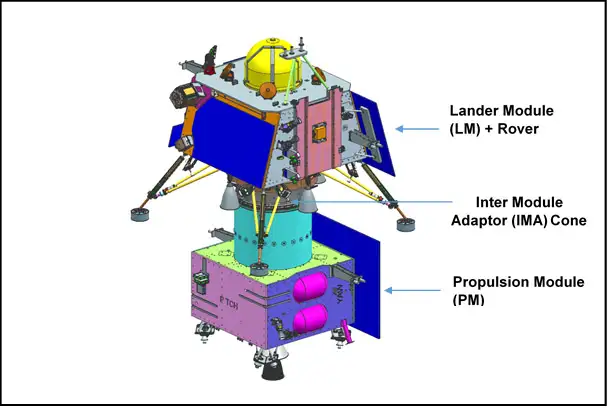
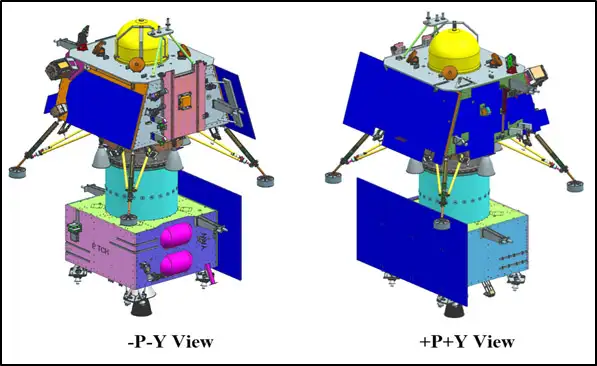
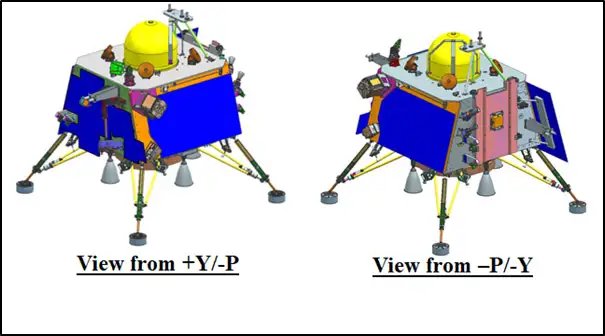
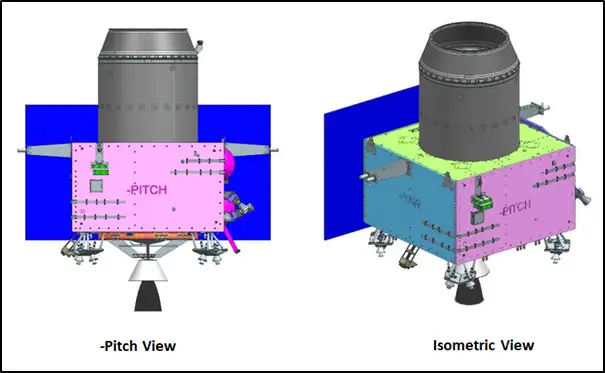
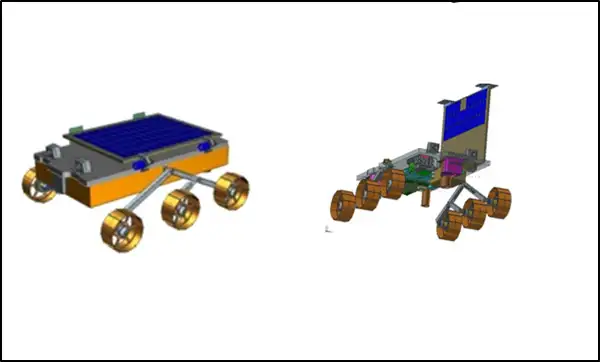
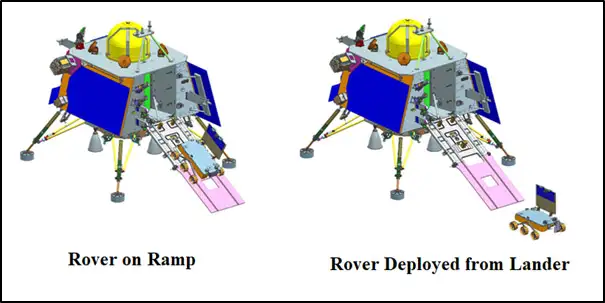
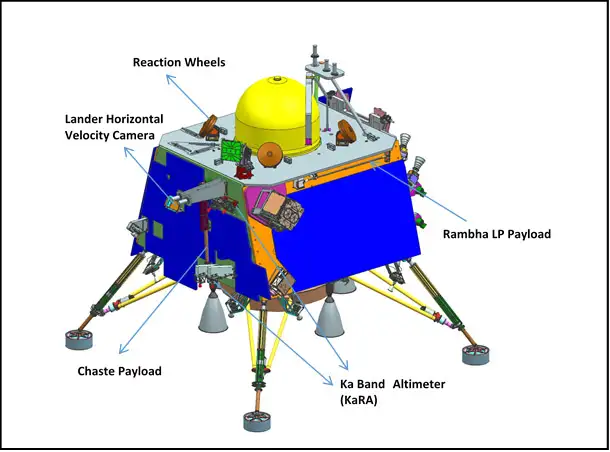
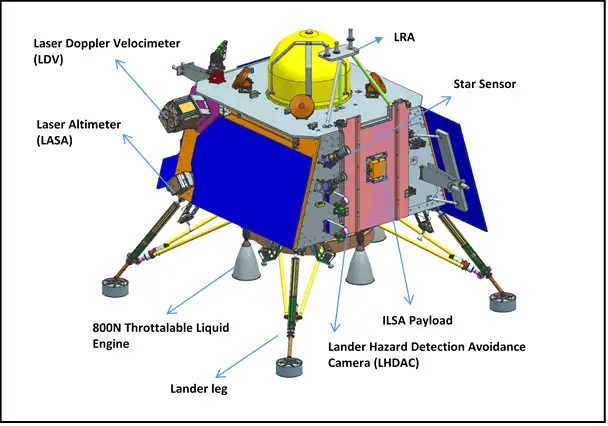
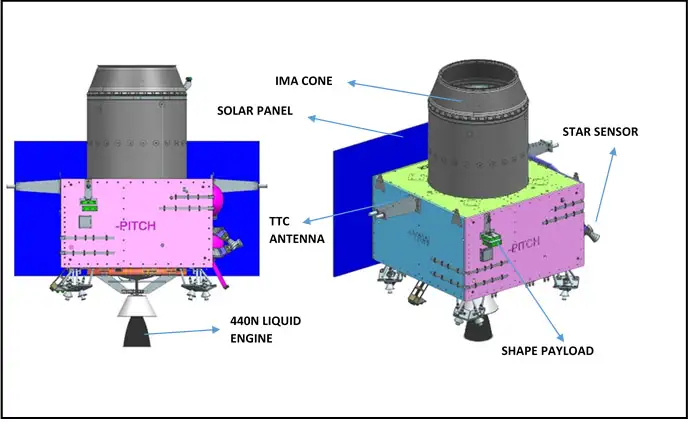
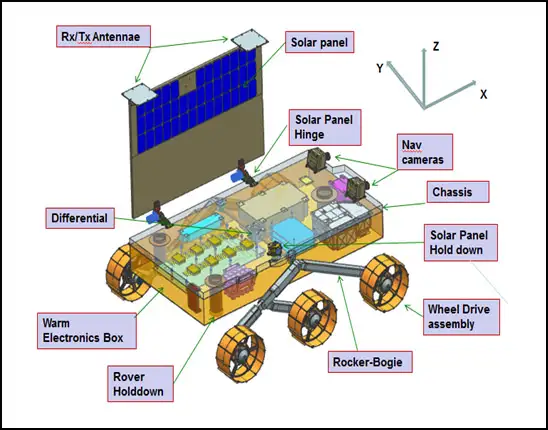
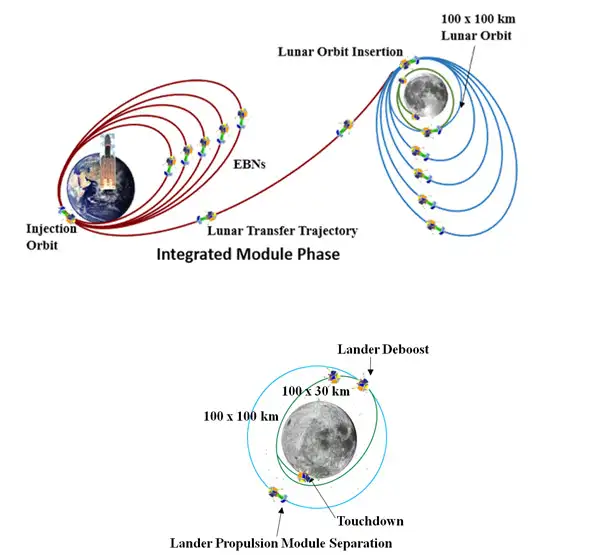
The next firing is planned for July 25 between 2 pm and 3 pm, the national space agency headquartered here said.
India celebrates the International Moon Day 2023 by propelling Chandrayaan-3 a step closer to the Moon, it added.
"...craft is on way to the Moon. In another few days it will go (the lander will soft-land on the Lunar surface)," ISRO Chairman Somanath S said earlier in the day while delivering the inaugural address to the Space Science Technology & AwaReness Training (START) programme 2023.
India's Chandrayaan-3 moon rover mission aces orbit-raising maneuvers around Earth
Chandrayaan-3's moon landing attempt is scheduled for Aug. 23 or Aug. 24.
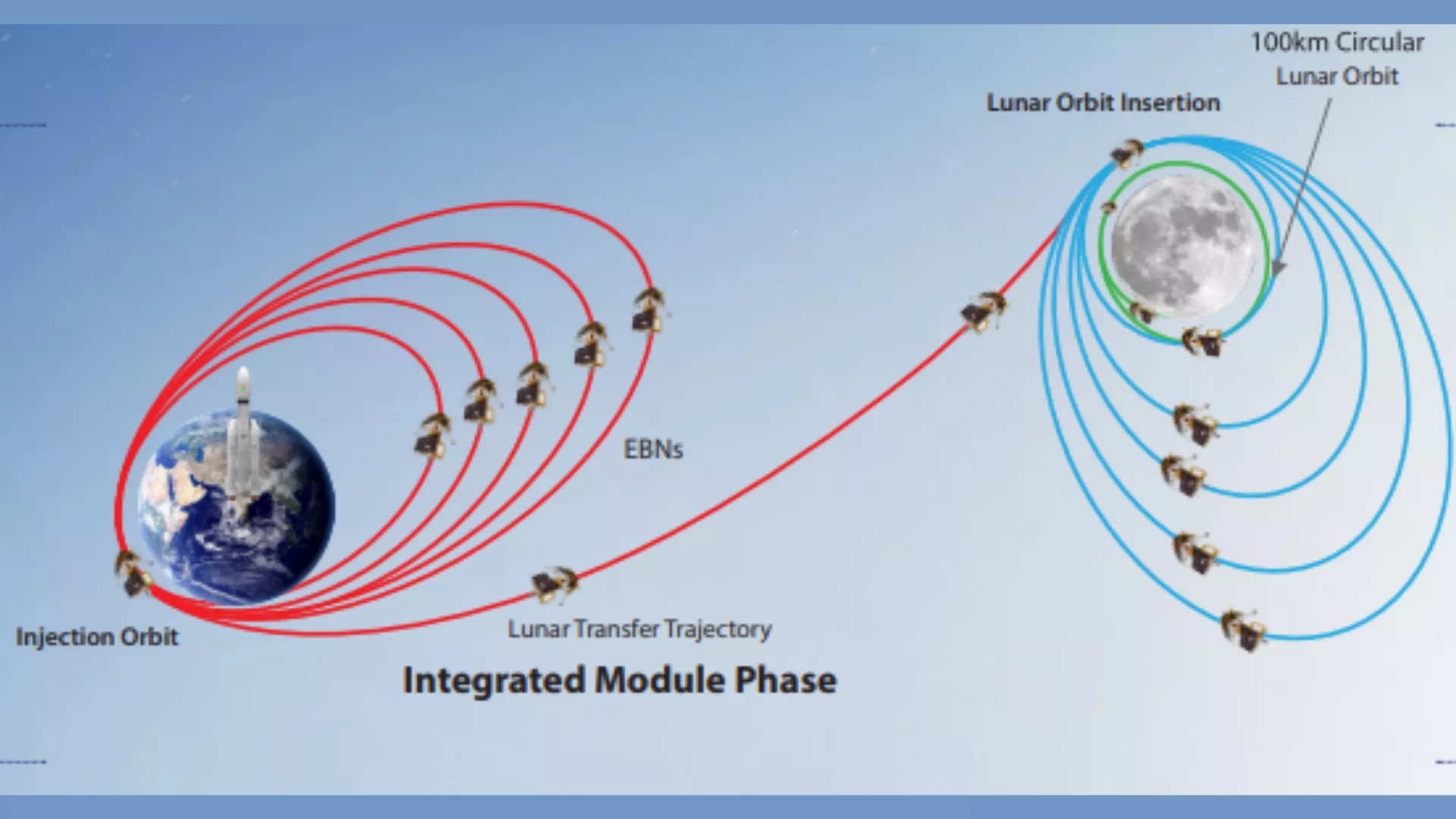
India’s Chandrayaan-3 spacecraft is continuing its circuitous journey to the moon with a series of burns to raise its orbit.
Chandrayaan-3 launched on July 14 into an orbit around Earth and has been slowly boosting its orbit ahead of a final shot toward the moon.
The lunar spacecraft's propulsion module completed a fourth orbit-raising maneuver on Thursday (July 20), the Indian Space Research Organisation (ISRO) stated. The engines fired at the spacecraft’s closest approach to Earth, raising its apogee, or the farthest point from Earth of its orbit.
"India celebrates the International Moon Day 2023 by propelling Chandrayaan-3 a step closer to the moon," ISRO tweeted on Thursday.
The next firing is planned for between 2 and 3 p.m. India Standard Time (0830-0930 GMT; 4:30-5:30 a.m. EDT) on July 25, ISRO added. A translunar injection (TLI) burn will take place on July 31.
The maneuvers are part of Chandrayaan-3's low-energy approach to the moon that will see it attempt a landing on the moon on Aug. 23 or Aug. 24.
The mission is India’s second attempt to touch down on the moon, following the failed 2019 attempt made by the Chandrayaan-2 lander. The new mission has built on the lessons learned from the earlier landing attempt.
If touchdown is successful, the mission lander and rover will collect science data on the surface for up to 14 Earth days (a single day on the moon). The spacecraft are not expected to survive the deep cold of the lunar night.
Quelle: SC
----
Update: 27.07.2023
.
Chandrayaan-3 mission update: Isro to raise orbit of lunar mission for 5th time today
Launched on July 14, Chandrayaan-3 has been gradually boosting its orbit around Earth, preparing for its final shot toward the moon.
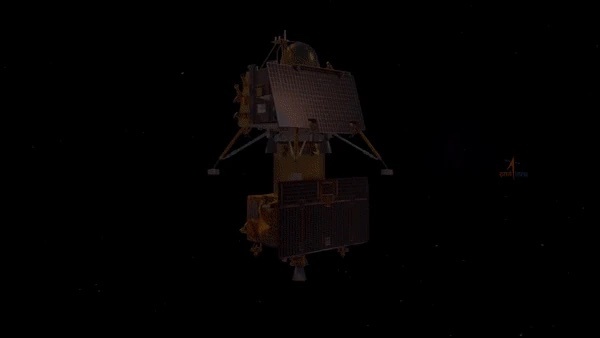
In Short
- The spacecraft was placed into an elliptic parking orbit
- The fifth orbit-raising maneuver is scheduled to occur between 2 pm and 3 pm
- Tacecraft will position itself for lunar insertion
India's ambitious lunar mission, Chandrayaan-3, is set to perform its fifth and final Earth-bound orbit-raising maneuver on Tuesday as it enters the final phase before leaving Earth and heading towards the Moon.
The Indian Space Research Organisation (Isro) has confirmed that the spacecraft will position itself for lunar insertion following this crucial maneuver.
Launched on July 14, Chandrayaan-3 has been gradually boosting its orbit around Earth, preparing for its final shot toward the moon. The spacecraft was placed into an elliptic parking orbit of 36,500 km x 170 km by the Launch Vehicle Mark-3 (LVM-3) in a flawless lift-off.
The Moon's gravity will eventually pull Chandrayaan-3 into lunar orbit, setting the stage for the next phase of this historic mission.
Chandrayaan-3's mission extends beyond merely reaching the Moon. It aims to conduct scientific experiments to study the lunar environment, including its history, geology, and potential for resources. The spacecraft comprises a lander and rover, developed by Isro, designed to safely land on the lunar surface, collect data, and conduct a series of scientific experiments.
The lander, named Vikram, and a rover named Pragyan are expected to land near the south polar region on August 23. This mission follows Chandrayaan-2, which experienced a last-minute glitch leading to the lander crashing after entering lunar orbit.
By the first week of August, Chandrayaan-3 would have completed 5-6 circles of the Moon and entered the innermost circle. Then it will take another ten days to locate the exact spot where it has to land on the Moon.
The Chandrayaan-3 mission represents a significant step toward Isro’s future interplanetary missions. As the world watches with bated breath, India's journey toward unlocking the secrets of the Moon takes an exciting leap forward.
Quelle: INDIA TODAY
+++
Chandrayaan-3 completes Earth orbit-raising manoeuvres
The spacecraft is expected to touch down on the lunar surface on August 23
The Indian Space Research Organisation (ISRO) on Tuesday successfully performed the fifth orbit-raising manoeuvre scheduled as part of its lunar mission, Chandrayaan-3.
The Earth-bound perigee firing, the last of the mission’s Earth orbit-raising manoeuvres, was performed from the ISRO Telemetry Tracking and Command Network here. ISRO said the spacecraft was expected to attain an orbit of 127,609 km x 236 km. The fourth orbit-raising manoeuvre as part of the mission was carried out on July 20. The spacecraft, launched from the Satish Dhawan Space Centre in Sriharikota on July 14, is expected to touch down on the lunar surface on August 23.
Quelle: Deccan Herald
----
Update: 1.08.2023
.
Chandrayaan-3 countdown starts with craft now 6 days from Moon
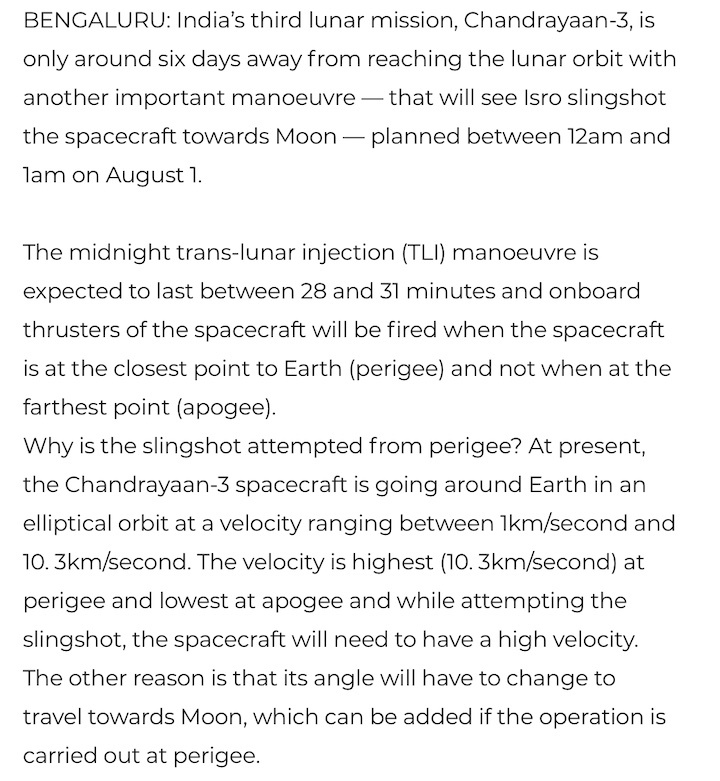
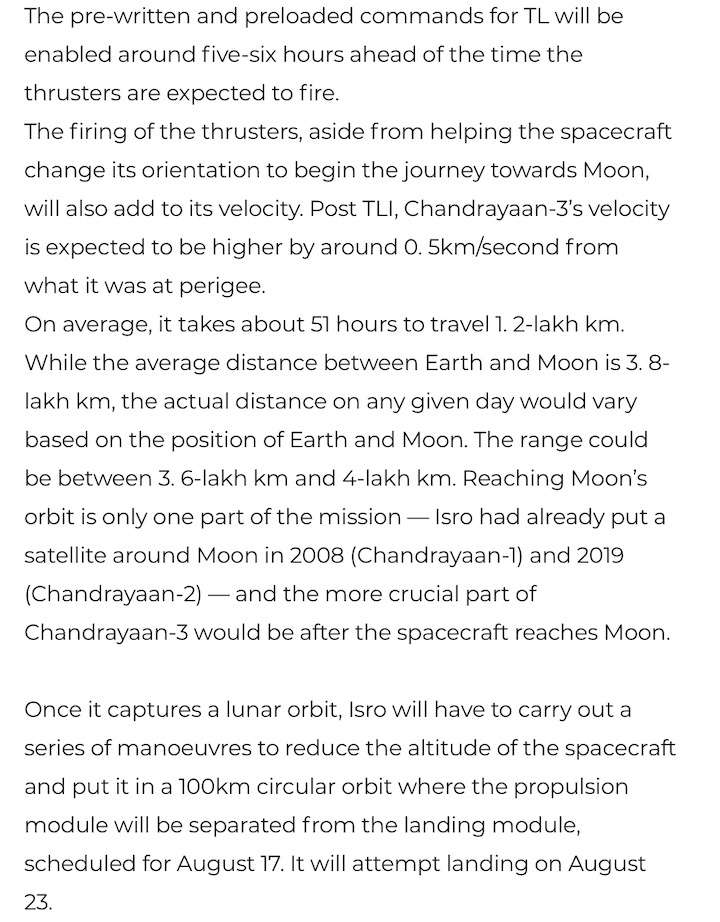
Quelle: THE TIMES OF INDIA
+++
Chandrayaan-3 update: Isro to fire up engines, put spacecraft on road to moon
The move is expected to last between 28 to 31 minutes, during which the engines on the Propulsion Module of the spacecraft will roar to life to increase the velocity.
By India Today Science Desk: After flying in the vacuum of space for nearly 15 days, the Chandrayaan-3 mission is ready to be put on the road to the moon. The spacecraft will go through the critical Trans Lunar Injection tonight.
The Indian Space Research Organisation (Isro) has scheduled this pivotal event between 12 am and 1 am on August 1. The move is expected to last between 28 to 31 minutes, during which the engines on the Propulsion Module of the spacecraft will roar to life to increase the velocity.
The TLI is a propulsive maneuver used to set a spacecraft on a trajectory that will set it on course to intercept the Moon. It involves a significant burn, usually performed by a chemical rocket engine, which increases the spacecraft's velocity.
This increased velocity changes its orbit from a circular low Earth orbit to a highly eccentric one. The TLI burn is sized and timed to precisely target the Moon as it revolves around the Earth.
The burn is timed so that the spacecraft nears apogee (closest point) as the Moon approaches. Finally, the spacecraft enters the Moon's sphere of influence, making a hyperbolic lunar swingby.
Chandrayaan-3 was launched on July 14, 2023, from the Satish Dhawan Space Centre in Sriharikota. Since then, it has successfully executed five orbit-raising maneuvers, bringing it closer to its ultimate destination. The upcoming TLI is a critical step in this journey.
Upon successful completion of the TLI, Chandrayaan-3 will embark on its lunar transfer arc, approximating an elliptical orbit about the Earth with an apogee near the radius of the Moon's orbit.
The spacecraft is expected to reach lunar orbit after a series of complex maneuvers.Once in lunar orbit, the mission will enter its moon-centric phase, with several critical events lined up, including the separation of the lander, a set of deboost maneuvers, and finally the descent phase for a soft landing on the lunar surface.
Chandrayaan-3 carries scientific instruments designed to study various aspects of the lunar surface, including the thermophysical properties of the lunar regolith, lunar seismicity, the lunar surface plasma environment, and the elemental composition in the vicinity of the landing site on the Moon.
The total cost of the Chandrayaan-3 mission is Rs 615 crores, significantly lower than its predecessor, Chandrayaan-2.
Upon landing, it will operate for one lunar day, approximately 14 Earth days. This mission marks a significant milestone in India's space exploration journey, deepening our understanding of the Moon and paving the way for future lunar missions.
Quelle: INDIA TODAY
----
Update: 6.08.2023
.
Chandrayaan-3 Covers Two-Thirds Of Journey To Moon, Lunar Orbit Entry Confirmed For 5 August
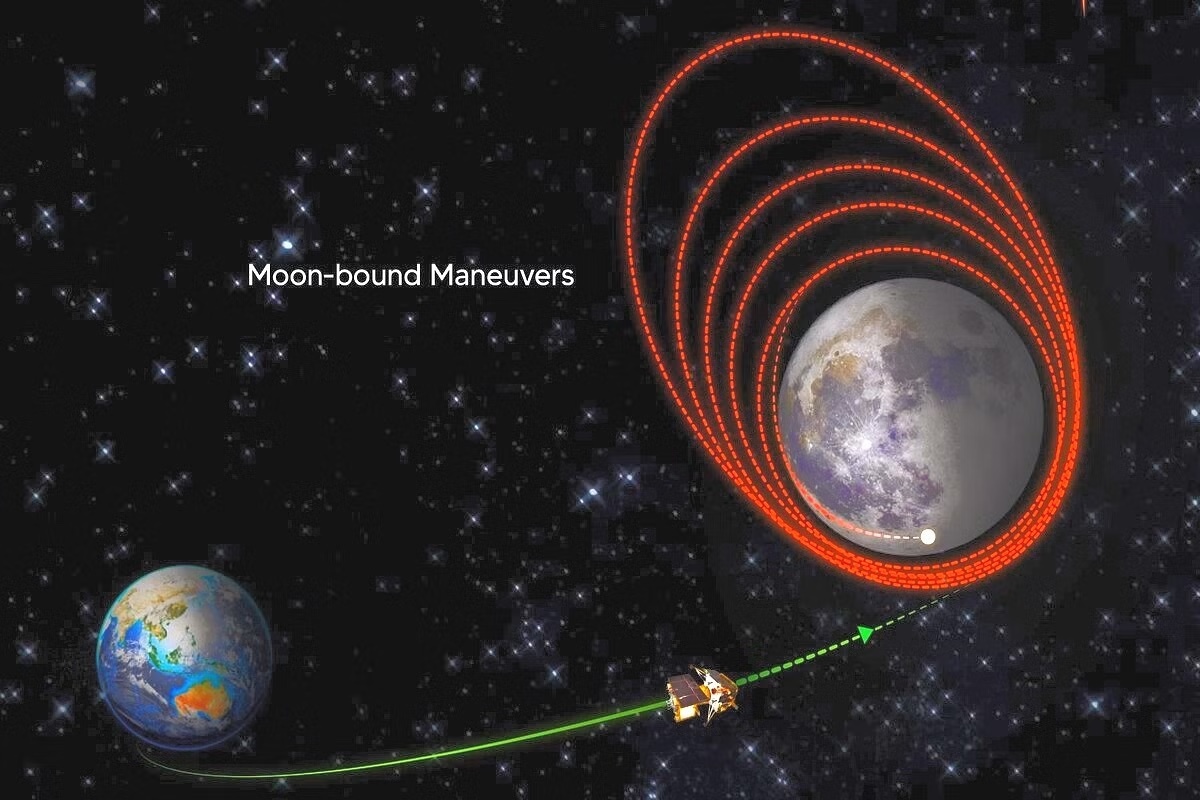
Chandrayaan-3, India's third moon mission launched on 14 July, has completed approximately two-thirds of its journey towards the moon.
The spacecraft underwent a successful TransLunar Injection (TLI) on August 1, performed by the Indian Space Research Organisation (ISRO), which redirected it towards the moon.
The next crucial phase, the Lunar Orbit Injection (LOI), is scheduled for August 5 around 7 p.m. Indian Standard Time
During this stage, the spacecraft is expected to enter the moon's orbit.
The LOI operation will be executed from ISRO Telemetry, Tracking, and Command Network (ISTRAC) in Bengaluru.
After launch on 14 July, the Chandrayaan-3 propulsion module, carrying the lander, was put into an elliptical orbit around the Earth by the Indian Space Research Organisation’s (ISRO’s) heaviest rocket — the Geosynchronous Satellite Launch Vehicle (GSLV) Mark-III.
With every burn of the onboard propulsion system, the module kept spiralling outwards in increasingly elongated ellipses.
The speed of the propulsion module steadily increased until it reached the escape velocity necessary to break free from Earth's gravity, enabling it to enter a Lunar Transfer Trajectory (LTT) and set a course towards the moon.
The entry of the Chandrayaan-3 module into the LTT was carefully timed to align with the moon's position in its own orbit.
This strategic timing ensures that the module reaches proximity to the moon's orbit precisely when the moon is located in that region.
Once the module reaches this point, a precise manoeuvre will be executed using the onboard propulsion system. This manoeuvre, known as lunar orbit insertion, is designed to reduce the module's velocity.
The gravitational field of the moon will then pull the module into a stable lunar orbit. A successful lunar insertion will complete the crucial phase of placing the spacecraft in orbit around the moon.
Quelle: SWARAJYA
+++
India’s Chandrayaan-3 lander arrives in lunar orbit
HELSINKI — India will make its second moon landing attempt in 18 days’ time after its Chandrayaan-3 spacecraft arrived in lunar orbit Saturday.
Chandrayaan-3 began a roughly 30-minute burn around 9:30 a.m. Eastern, seeing the spacecraft enter an elliptical lunar orbit, the Indian Space Research Organization (ISRO) stated via social media.
“MOX, ISTRAC, this is Chandrayaan-3. I am feeling lunar gravity,” ISRO Tweeted. “A retro-burning at the Perilune was commanded from the Mission Operations Complex (MOX), ISTRAC, Bengaluru.”
The spacecraft will gradually alter its orbit with a burn to reduce apolune Sunday, Aug. 6. It will settle into a 100-kilometer-altitude, circular polar orbit on Aug. 17.
From here, the Vikram lander will separate from the mission’s propulsion module and enter a 35 x 100-km orbit in preparation for landing.
Final descent and the soft landing attempt is set for Aug. 23. The primary landing site is in the vicinity of the lunar South Pole region, located at 69.37 degrees south latitude and 32.35 degrees east longitude. No previous Moon mission has landed at a lower latitude.
If successful, Chandrayaan-3 will make India only the fourth country in the world to achieve a lunar landing, joining the U.S., the former Soviet Union and China.
Chandrayaan-3 launched July 14 on a LVM-3 heavy-lift rocket from Satish Dhawan Space Centre into an initial orbit similar to a geosynchronous transfer orbit, beginning a circuitous journey to the moon.
The spacecraft performed five orbit-raising maneuvers across the following two weeks before making a successful translunar injection burn July 31 (UTC).
European Space Tracking (ESTRACK) is providing ground station support for tracking the mission. ESTRACK has previously supported Chinese lunar missions.

ISRO chose the prime landing site using high-resolution photographs and data from Chandrayaan-2 orbiter and NASA’s Lunar Reconnaissance Orbiter. The mission is a follow-up to the Chandrayaan-2 landing attempt which experienced a hard landing in 2019 due to a software glitch. That mission carried an orbiter which is still in operation around the moon.
ISRO says it has studied the lessons from 2019 and upgraded the software for Chandrayaan-3.
The main mission objective is to demonstrate a safe landing on the lunar surface. Beyond this, the mission will seek to demonstrate surface operations through the small, 26-kilogram Pragyan rover and conduct in-situ science experiments.
The 1,752-kilogram Vikram lander will deploy the six-wheeled Pragyan rover via a ramp. The solar-powered duo will carry out a set of scientific experiments for the duration of daytime at the landing site. One period of lunar daylight on the moon lasts for fourteen Earth days. Without radioisotope heater units the spacecraft are not expected to survive the deep cold of lunar nighttime.
India’s first lunar mission, the Chandrayaan-1 orbiter, launched in 2008. It spent a year in lunar orbit hunting for evidence of water molecules. It was then deliberately commanded to crash-land onto the lunar surface in 2009. The Chandrayaan-2 mission orbiter is still in orbit collecting science data.
Quelle: SN
